Clamps occupy a very important part of any woodworker’s toolbox. Without clamps, almost all woodworking projects will be very difficult or even impossible to carry out correctly.
For instance, when gluing two or several pieces of wood together, you need to clamp them in place after applying the glue to allow the glue to set and hold them together firmly.
Without clamping the wood pieces together, the joint will not be as strong as it should be, and it might end up failing later on.
Apart from joining different wooden pieces together, clamps also allow you to secure objects or wooden pieces firmly to a workbench so you can work on them easily.
For instance, to use a block plane on a piece of wood, you need the wood to be secured firmly to your workbench so it doesn’t move while you plane it.
When drilling through a piece of wood, you might also need to clamp it to the workbench or the drill press.
Here in this article, I’ve listed some of the most important clamps you can use to make your woodworking projects way easier than it is now.
Table of Contents
Bar clamp
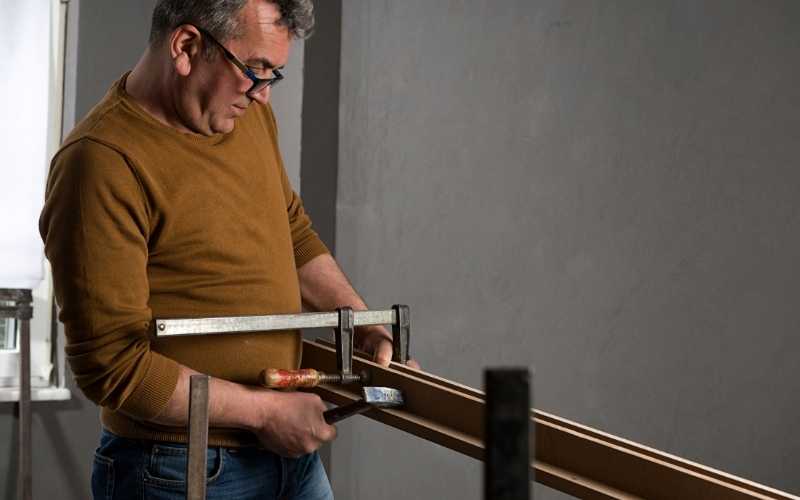
A bar clamp is a very common clamp you’ll find in almost any woodworking shop. It’s also called an F-clamp or a speed-clamp.
Woodworkers use the bar clamp when temporally holding pieces of wood together that are being joined permanently through other means like glue and screws.
So, if you want to glue two or several pieces of wood together, you can use a bar clamp like the one shown above to hold them in place after applying the glue.
Spring clamp
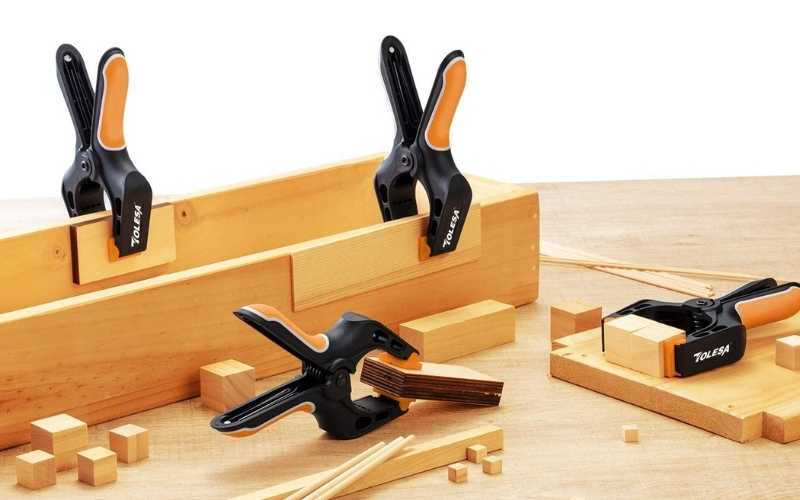
A spring clamp looks just like a plier, with the clamping force provided by the tension of a spring. It is also known as a hand clamp or a pinch clamp.
A simple spring clamp consists of two jaws, two handles and a spring pivot which connects the jaw and handle together. Just like a simple plier or cloth clip, you can usually operate it with one hand by squeezing the handles to open the jaws and then release it to clamp the pieces you want to hold together.
The spring clamp is usually used in woodworking when it will be awkward to use larger clamps like the bar clamp.
Just like the bar clamp, it is usually used when gluing or screwing pieces of wood together, where the spring clamp holds the pieces together temporarily until the glue sets or once you’ve driven in the screws you want to use to hold the pieces permanently.
C-Clamp
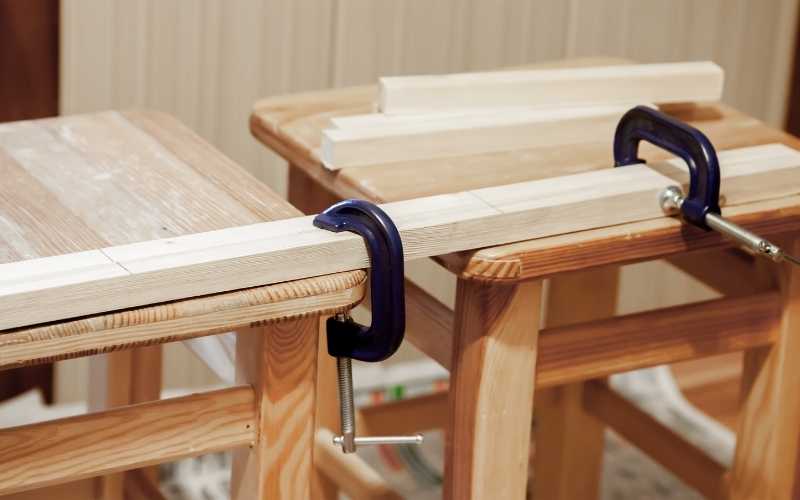
While some clamps are used when joining pieces of wood or metal together, some other clamps just like I mentioned above are used for holding materials in place so you can work on them without movement.
A C-clamp is one of such clamps. You can use it to secure materials to your workbench so you can work on the materials.
Another name for a C-clamp is G-clamp, because when you combine the screw at the bottom of the C frame, it looks like an upper-case G.
In the early times however, they were called carriage maker’s clamp or carriage clamp.
Band clamp
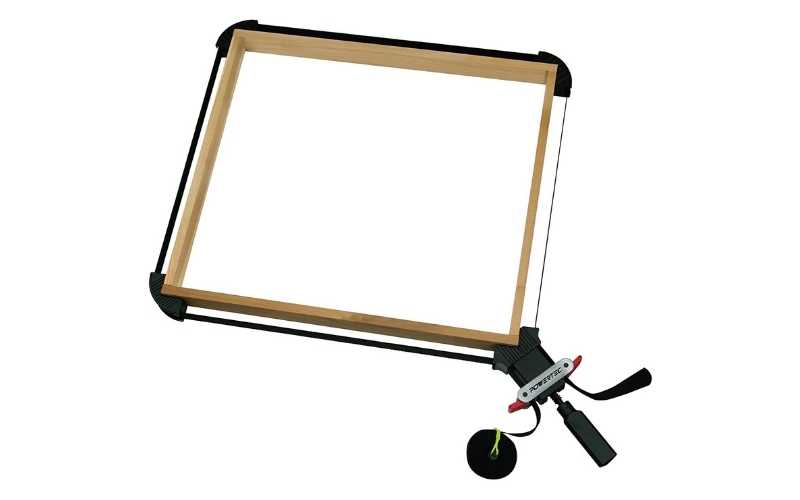
A band clamp is ideal for clamping or holding both regular and irregularly shaped pieces and projects. Whether you want to secure tightly square, round or any other irregular-shaped piece during your woodworking projects, a band clamp is the ideal clamp you should go for.
In its basic form, it consists of a strap of metal, cloth or webbing (usually webbing) which is formed into a loop, and connected to a mechanism which forcibly increases or reduce the diameter of the loop, thereby exerting a squeezing force on the object within the loop or band.
You’ll find band clamps very useful if you build cabinets, picture frames, barrels, drawers, birdhouses, chair frames and projects like that.
Flooring clamp
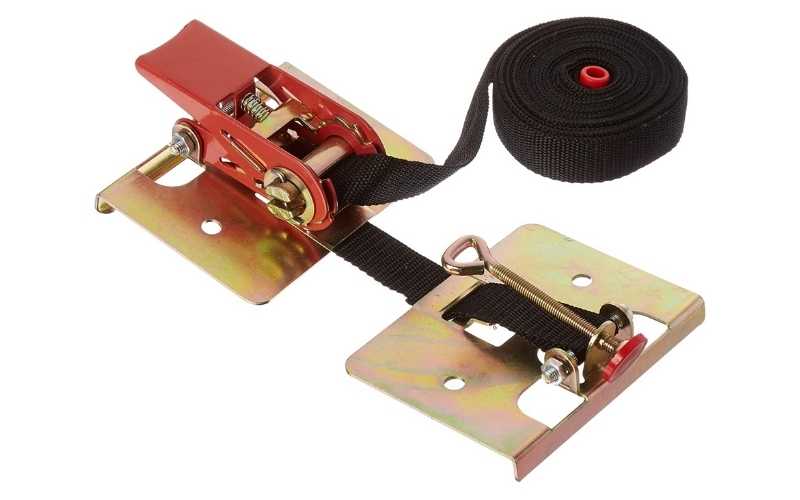
The name of this clamp says everything about it. It’s a flooring clamp. It’s used for installing laminate wood flooring planks, tongue & groove and other wood flooring materials.
They’re especially useful for installing tongue and groove laminate floors. When installing a wooden tongue and groove laminate floor, only one flooring clamp is useless.
You need multiple clamps spaced according to the size of the floor, to ensure uniform pressure is exerted on the planks.
Hand screw clamp
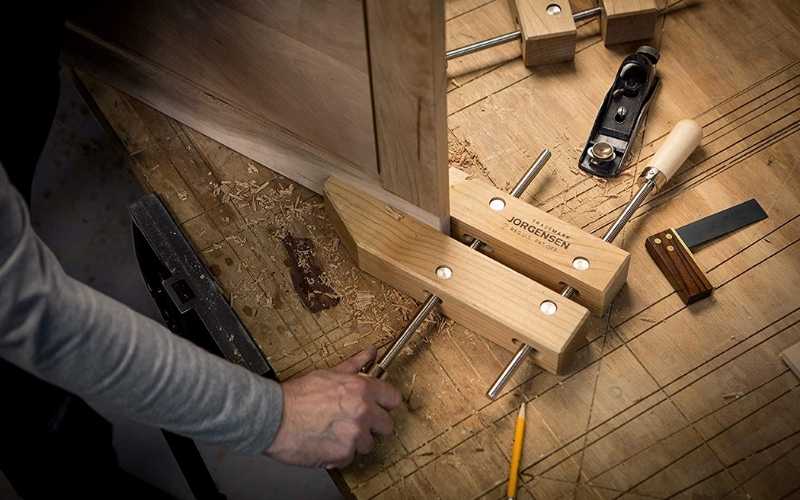
The hand screw clamp have many applications in the woodworker’s shop. It’s a special kind of clamp in that it’s mainly made out of wood, thus it’s particularly use for clamping woodworking or wooden pieces, as there’s little chance of marring the wood when you use it.
It’s a versatile clamp you can use it for many applications including gluing, assembling and even painting objects (especially wooden)
The hand screw clamp comes equipped with two screws which can be turned independently to alter the shape of the clamp. Thus, you can use it not only for clamping regular shaped objects but also irregular ones by simply turning one screw and leaving the other to alter the shape of the clamp.
Right angle clamp
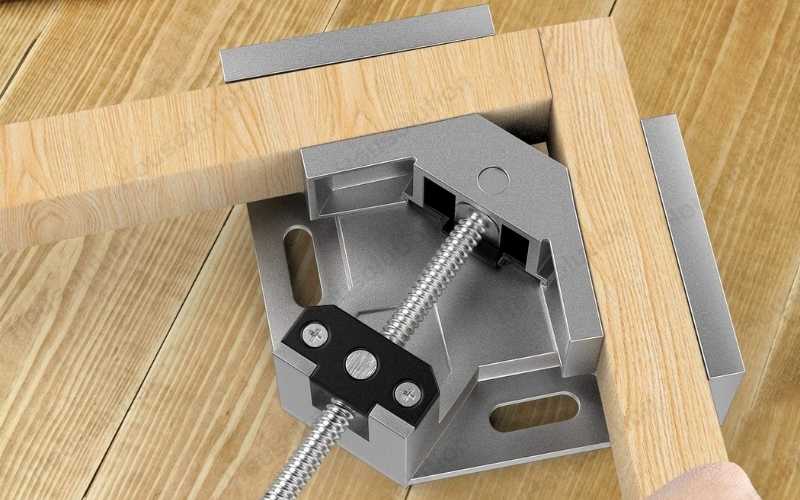
The right angle clamp is one of my favorite clamps for woodworking. It’s usually made of metal like aluminum and it allows you to join two wooden pieces of same or different thicknesses at right angles.
With the right angle clamp, you never have to worry whether the two pieces of wood you’re trying to join are square to each other.
It also serves as a third hand, allowing you to hold the two wooden pieces firmly in place so you can apply the joinery option you want such as using nails, screws or even glue.
Bench clamp

Want to hold wooden pieces or other objects firmly to a bench while you work on them? The bench clamp is a very good tool you can use for that.
It allows you to hold objects securely to your workbench while you work on them. For instance, if you want to saw a piece of wood, you can use the bench clamp to clamp it to the bench and saw away without the wood shifting.
When you want to drill holes in the wood, or if you want to plane the wood, a bench clamp like the one above from Kreg will do a lot of good for you, making the work easier than when you just leave the wooden piece lying on the bench with the ability to move freely.

